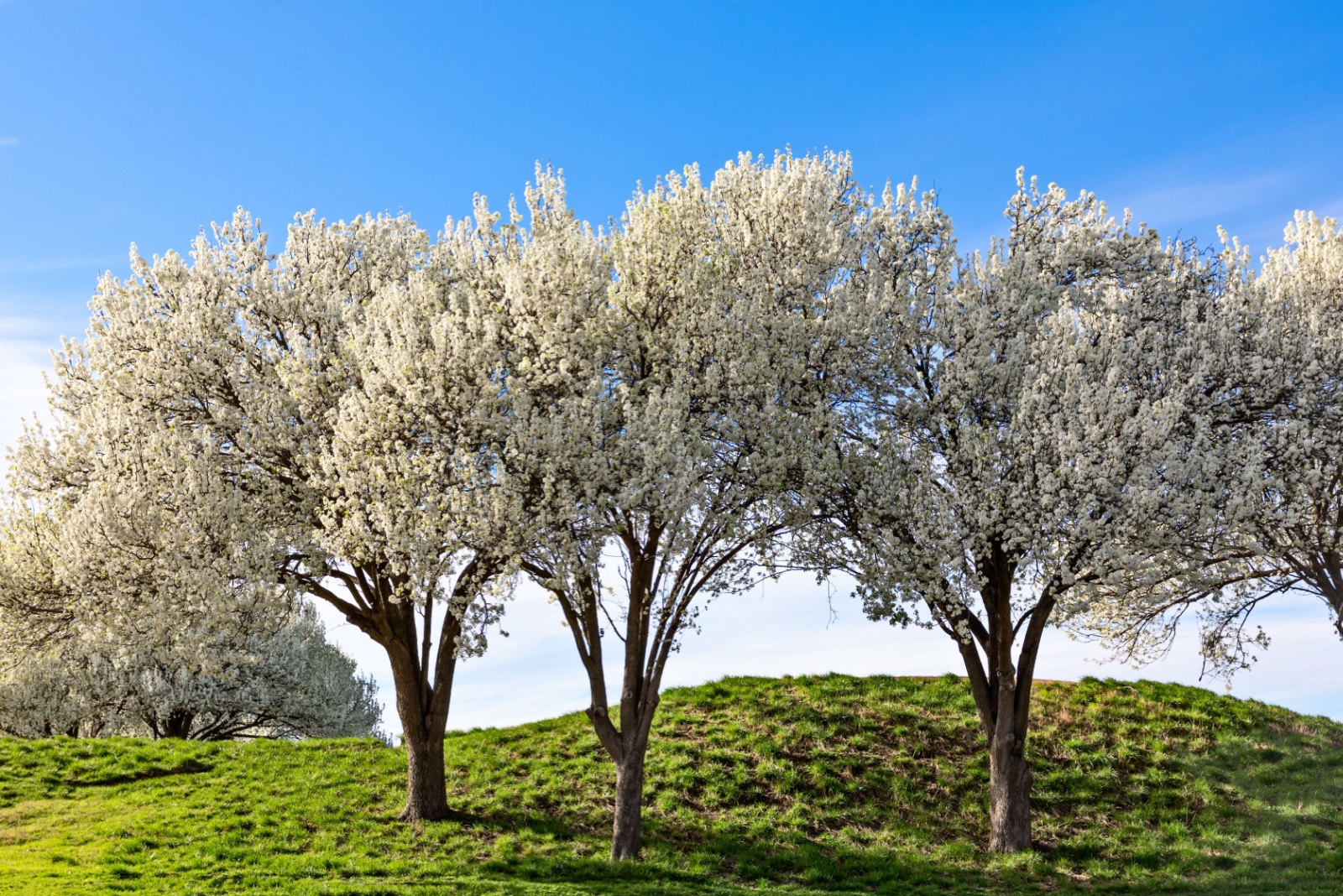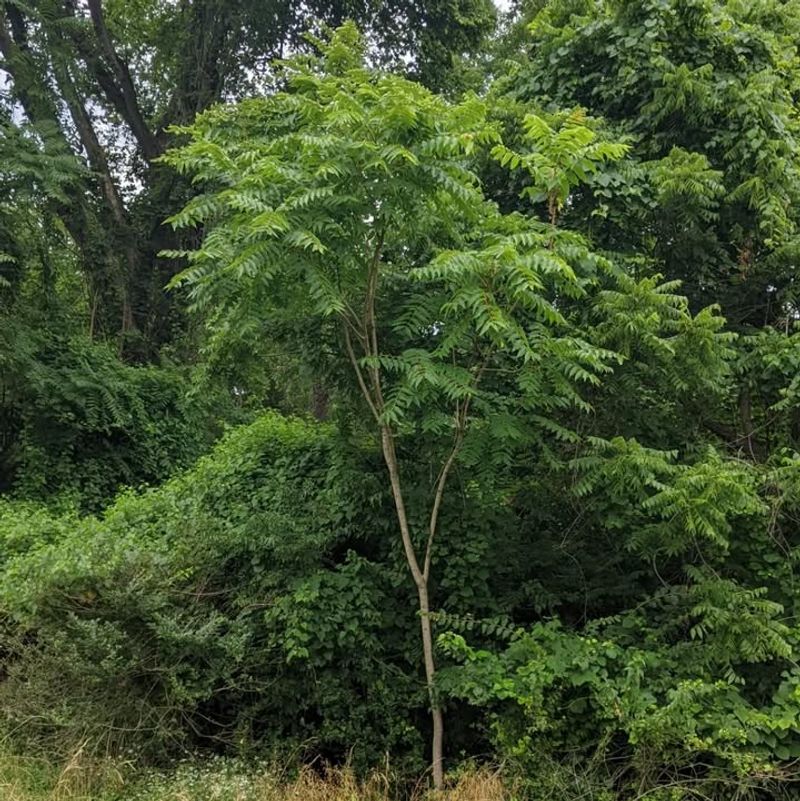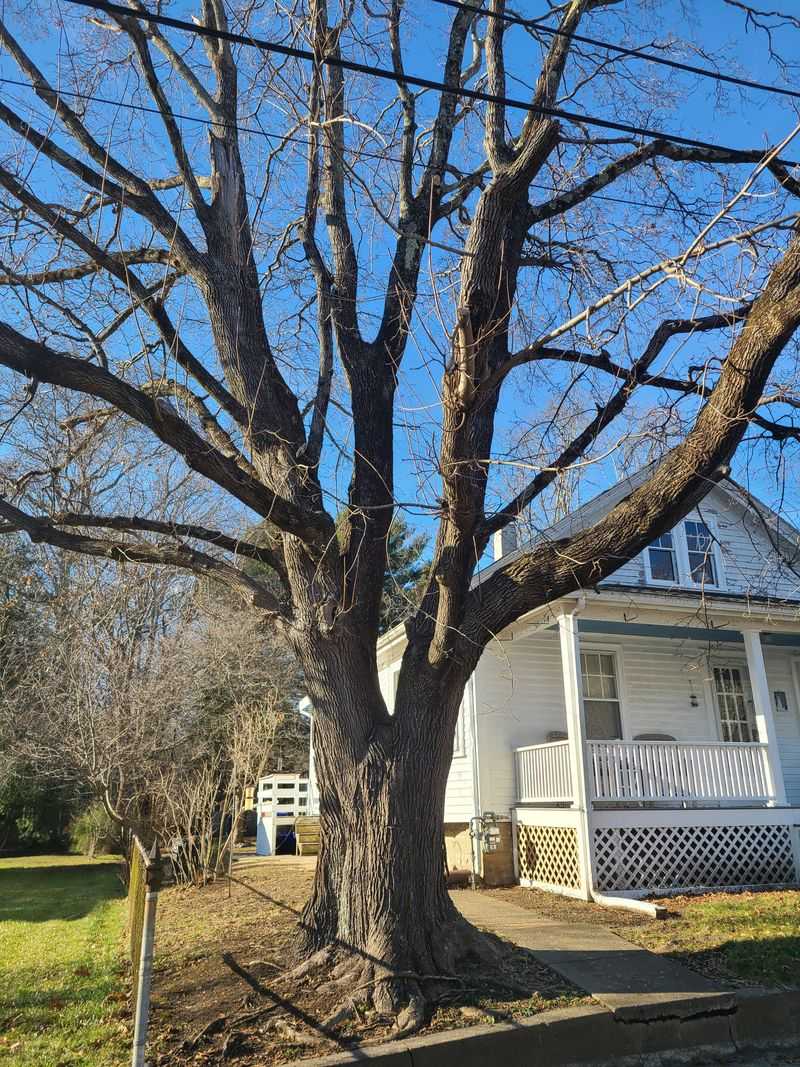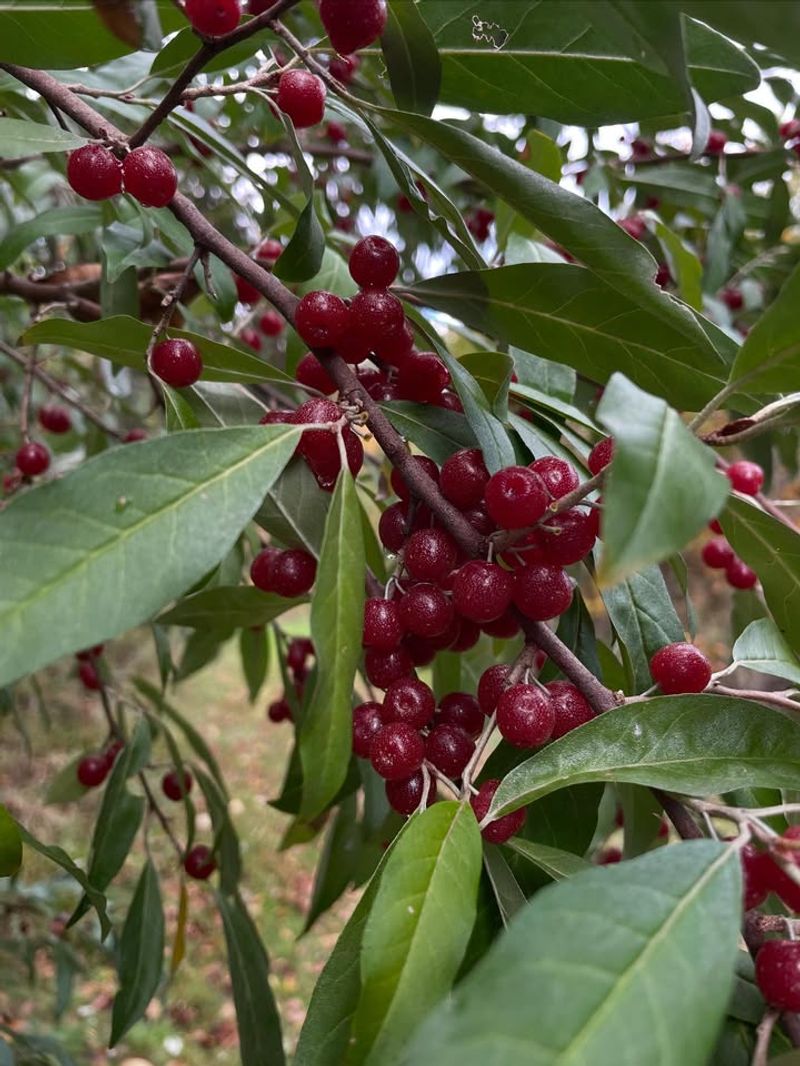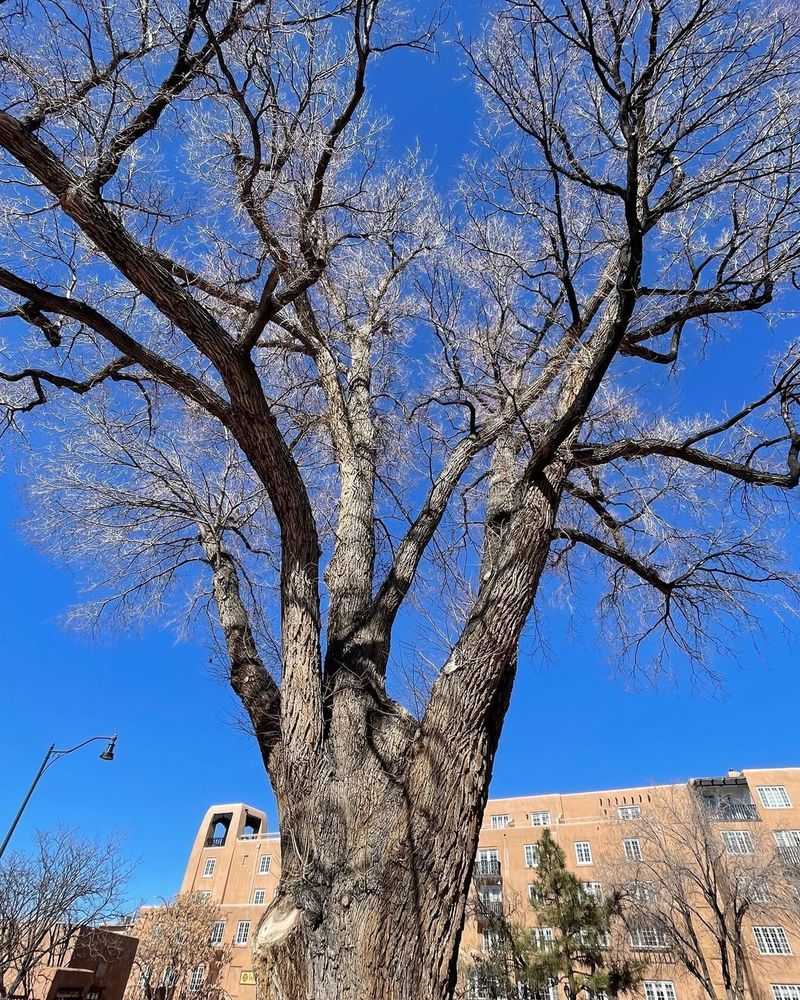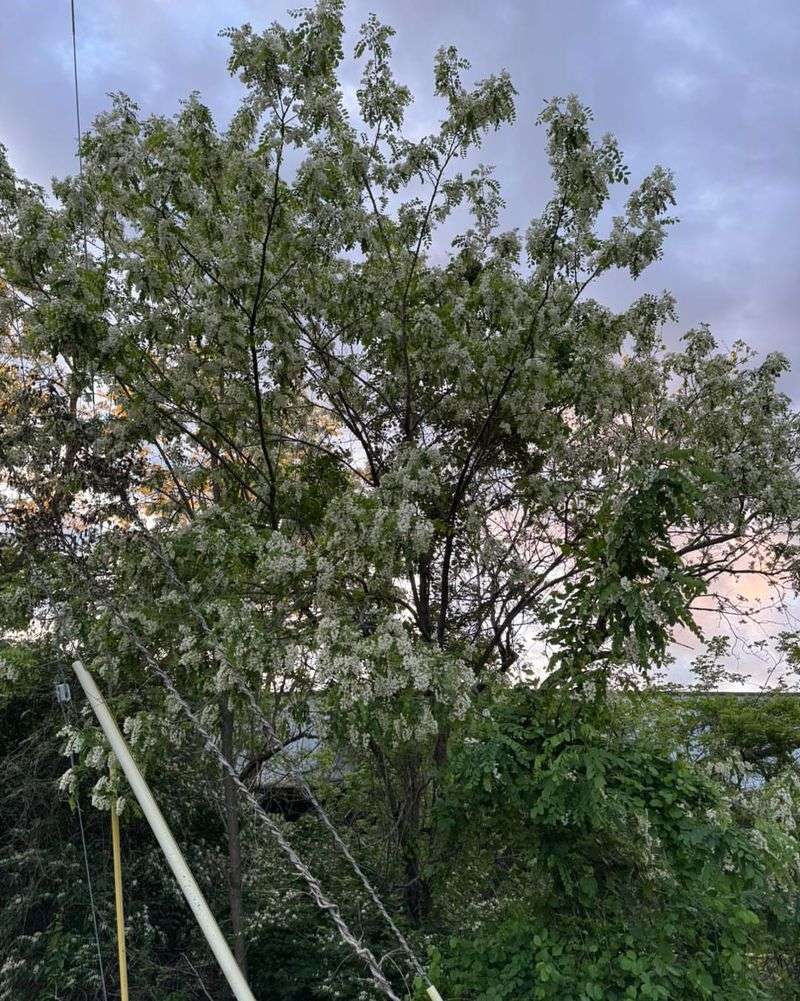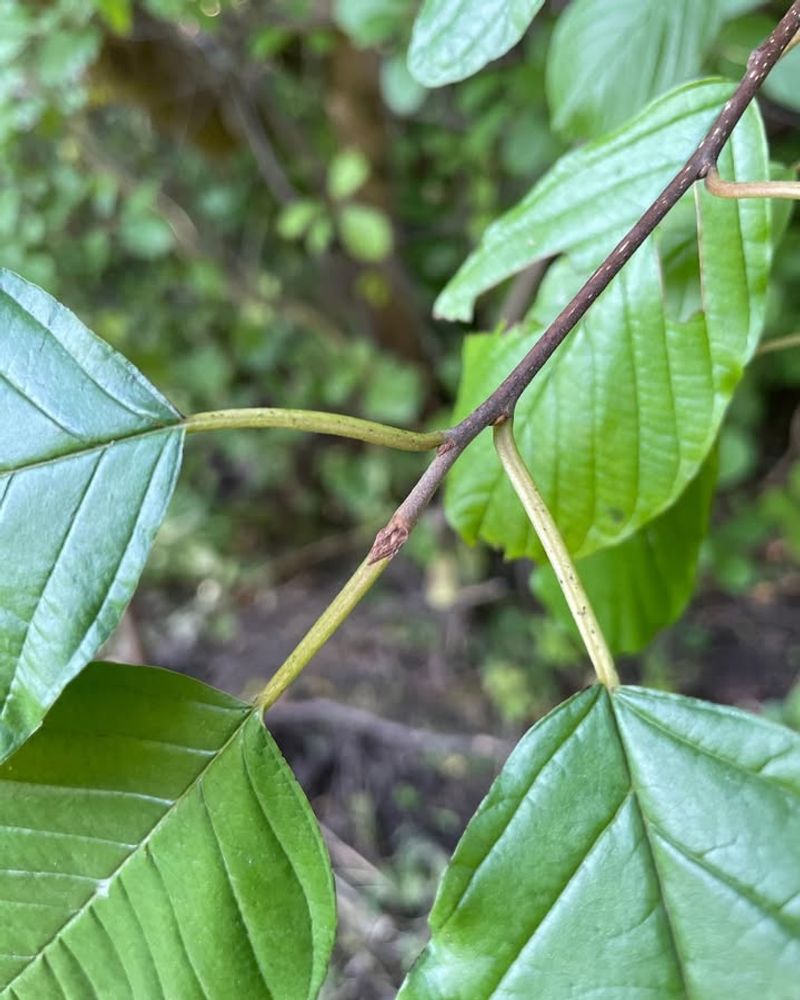Owning a home in Illinois comes with many responsibilities, and one you might not expect involves the trees in your yard. Some tree species are actually banned by state and local laws because they spread aggressively, harm native plants, or cause damage to property.
If you have one of these unwanted trees on your property, you could face serious fines or be required to remove them at your own expense.
1. Callery Pear (Bradford Pear)
Bradford Pear trees might look beautiful in spring with their white flowers, but they’ve become a major headache for Illinois communities. Their branches break easily during storms, creating safety hazards and costly cleanup.
Many municipalities now ban planting new ones, and some require removal of existing trees. The trees spread rapidly into natural areas, crowding out native species that wildlife depends on.
Check with your local ordinances because fines can reach hundreds of dollars if you refuse to remove them when ordered.
2. Tree Of Heaven (Ailanthus altissima)
Recognizing this invasive tree is easier than you might think—it releases a strong, unpleasant odor when you break its leaves or twigs. Tree of Heaven grows incredibly fast and sends up shoots everywhere, making it nearly impossible to control once established.
Illinois has designated it as a noxious weed in many counties, meaning property owners must remove it. The roots damage sidewalks, foundations, and underground pipes.
Ignoring removal orders can result in fines plus the cost of having the city remove it for you.
3. Norway Maple
Norway Maples create such dense shade that nothing else can grow underneath them, not even grass. While they were once popular street trees, Illinois now discourages them because they outcompete native maples and change forest ecosystems.
Several Illinois communities have added them to their prohibited species lists. Their shallow roots buckle sidewalks and driveways, leading to expensive repairs.
Before planting any maple, verify which species are allowed in your area to avoid future removal requirements and potential penalties.
4. Autumn Olive
Autumn Olive started as a conservation planting decades ago but quickly became a nightmare for landowners. Birds eat the berries and spread seeds everywhere, creating thick, impenetrable stands that smother native vegetation.
Illinois classifies it as an invasive species in many regions, and some counties mandate removal from residential properties. The shrubby trees grow extremely fast and resprout aggressively after cutting.
Homeowners who let these plants spread may face enforcement actions and fines from local environmental departments or homeowner associations.
5. Siberian Elm
Siberian Elms earned a reputation as the weed of the tree world because they pop up everywhere and grow incredibly fast. Their weak wood breaks easily in wind and ice storms, creating dangerous situations and property damage.
Many Illinois towns prohibit planting them and require removal when they appear on private property. They also host Dutch elm disease, which threatens valuable native elm trees.
Local codes often allow municipalities to remove these trees from your property and bill you for the service if you ignore warnings.
6. White Mulberry
White Mulberry trees produce abundant fruit that sounds appealing until you realize the mess it creates. Fallen berries stain everything—driveways, sidewalks, cars, and outdoor furniture—and attract hordes of insects and birds.
More importantly, they hybridize with native red mulberries, threatening that species with genetic pollution. Some Illinois communities restrict or ban them entirely.
Property owners might receive citations if these trees drop fruit on public sidewalks or if the trees spread into protected natural areas adjacent to their land.
7. Black Locust
Black Locust trees have beautiful white flowers and strong wood, but their aggressive spreading behavior makes them problematic for many homeowners. They send up suckers dozens of feet from the parent tree, invading lawns, gardens, and neighboring properties.
Their thorns pose injury risks, especially where children play. Certain Illinois municipalities have added them to restricted species lists for residential areas.
When these trees escape into natural areas or cause disputes with neighbors, local authorities may require removal and issue fines for non-compliance with vegetation management ordinances.
8. Buckthorn (Common And Glossy)
Buckthorn ranks among the most hated invasive plants in Illinois because it completely takes over forests and yards if left unchecked. Both common and glossy buckthorn produce thousands of seeds that sprout readily, forming dense thickets that exclude all other plants.
Many Illinois counties and municipalities require property owners to control or remove buckthorn. The plants alter soil chemistry and provide poor habitat for native wildlife.
Failure to manage buckthorn on your property can result in fines, especially in areas near forest preserves or conservation lands.

